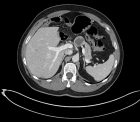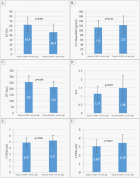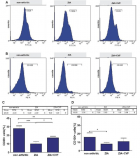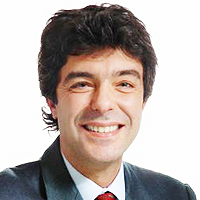About Vrije Universiteit Brussel
Vrije Universiteit Brussel
Articles by Vrije Universiteit Brussel
CT signs of pressure induced expansion of paranasal sinus structures
Published on: 26th September, 2017
OCLC Number/Unique Identifier: 7317653929
Several articles have been written about hyper inflated sinus structures. Never before, however, a complete overview of all possible pressure induced variations of sinus anatomy have been published. The aim of this study was to make an inventory of the most common CT signs of hyper inflated paranasal sinus structures. During a period of 2 years all CT-scans of the paranasal sinuses made in an ENT-department were studied and the most typical shapes of hyper inflated sinus structures were recorded.
The authors documented 9 different anomalies of the anterior paranasal sinus complex (frontal sinus, frontal and supra-orbital recess and anterior ethmoid), 8 of the ethmoid and 1 of the sphenoidal sinus. These hyper inflated paranasal sinus structures can only be generated by high positive intranasal pressures. The nose blowing manoeuvre is the only manoeuvre that generates extremely high pressures and as such it might be the driving force in the generation of these hyper inflated paranasal structures and consequently play a role in the pathophysiology of chronic sinusitis.
Pneumatisation of the sinuses starts at birth and is a lifelong process. Sometimes, however, pneumatisation can be extreme and will result in facial deformities. Pneumosinus dilatans, is such a condition, characterized by an abnormal dilatation of a paranasal sinus cavity, containing air only. Most reports describe pneumosinus dilatans of the frontal sinus, but also other sinuses can show this phenomenon: maxillary sinus and in one case a unilateral pneumosinus dilatans of nearly all sinuses (maxillary, ethmoid, and sphenoid sinus) was described.
Recently Kalavagunta et al., described a less dramatic expansion of the maxillary sinus and named it “Extensive Maxillary Sinus Pneumatisation” (EMSP). They were surprised to see that EMSP has received little attention in the literature. Neuner et al., described 9 different atypical pneumatisation abnormalities of the paranasal sinus anatomy.
Most of deformities of the sinus pneumatisation are growth deformities of the thick bones that make up the frame of the sinuses. Only a few articles, deal with specific deformities of thinner bone structures such as “wavy orbital floor” and “frontal cells”. Never before, however, an article was published that studied all possible deformities due to increased pressures and tried to make a classification. So the aim of this study was to make an inventory of the most obvious pressures related deformities that can be seen on CT-scans of patients with rhinosinusitis.
RETRACTED: Assessment of using an Octavius 4D Measuring System for Patient-specific VMAT Quality Assurance in Togo
Published on: 3rd September, 2024
Purpose and objective: Quality assurance (QA) programs are designed to improve the quality and the safety of radiation treatments, including machine- and patient-specific QA (PSQA). The objective of this study was to evaluate the current state of PSQA practice and identify the area for potential improvement for VMAT delivery. Materials and methods: The Octavius 4D (O4D) system accuracy was evaluated using an O4D homogeneous phantom for different field sizes. The system response to dose linearity, field sizes, and PDD difference tests were performed against the calculated dose of the treatment planning system (TPS) for a 6 MV photon beam. The deviation of the delivered dose was evaluated at the isocenter and different depths. Moreover, pretreatment verification of 40 VMAT plans was performed including prostate cancer (PC), head and neck cancer (HNC), uterine and cervical cancer (UCC), and breast cancer (BC). The PTW VeriSoft software was used to perform the local and global 3D gamma analysis by comparing the reconstructed 3D dose against the calculated dose using criteria 2%/2 mm and 3%/3 mm, 20% of low-dose threshold, and 95% of gamma passing rate (%GP) tolerance level. In the clinical scenario, the sensitivity of the O4D system in detecting VMAT delivery and setup errors has been investigated by measuring the variation of %GP values before and after the simulated errors using one of the VMAT plans related to each treatment site. Results: The O4D system reported good agreement for linearity, field size, and PDD differences with TPS dose being within ± 2% tolerance for a 6 MV photon beam. Output factors were consistent between the ionization chamber and the O4D detector 1500 array down to 4 x 4 cm2 field size with a maximum deviation of less than 1%. The introduction of deliberate errors caused the decrease of %GP values. In most scenarios, the %GP value of simulated errors was detected with 2%/2 mm and ranged between the detection threshold and gamma passing threshold.Conclusion: The results indicate that the O4D system is sensitive to detect delivery and setup errors with restrictive criteria of 2%/2 mm for routine pretreatment verification. Moreover, this system should be used in combination with kV-CBCT to improve dosimetry accuracy and treatment reproducibility.
Lymphoscintigraphic Investigations for Women with Lower Limb Edemas After One Pregnancy
Published on: 11th February, 2025
Lower extremity edema is one of the most common complaints among pregnant patients. Lymphatic origin to these edemas is rarely considered and few cases of lymphedema after pregnancy have been reported and documented in medical literature. We describe here a series of 15 cases where the diagnosis of lymphedema was established by lymphoscintigraphy. Dermal reflux was observed in ten of the 15 patients (66%), popliteal lymph nodes in 11 (73%), and the edematous limb(s) were said to be abnormal in all but one case which showed only functional asymmetry at rest and limited vascular reflux in a calf.

HSPI: We're glad you're here. Please click "create a new Query" if you are a new visitor to our website and need further information from us.
If you are already a member of our network and need to keep track of any developments regarding a question you have already submitted, click "take me to my Query."

















































































































































